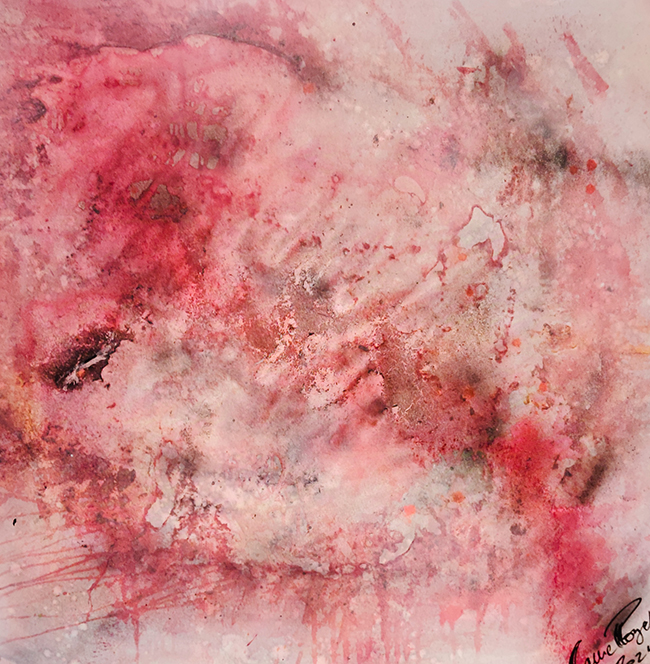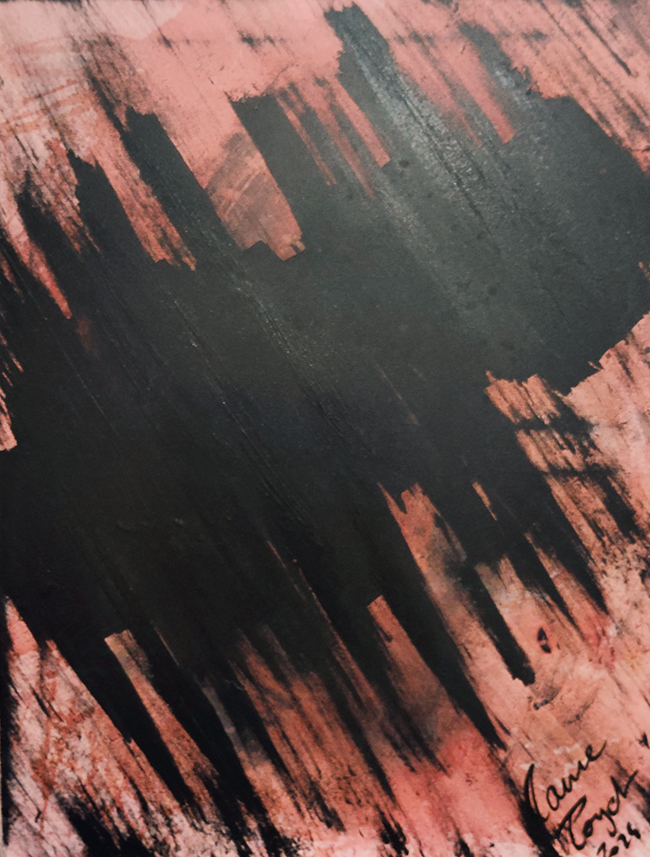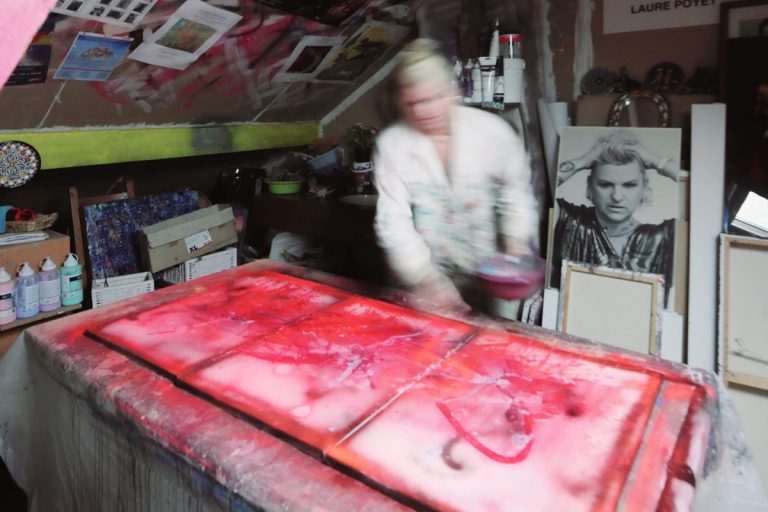Laure Poyet, an artist who embraces the philosophy of L’Art Organique, or Organic Art, invites us into a realm where art isn’t just observed but experienced. With a mantra of “Don’t think about art; do it!”, Poyet’s journey as a painter is one of surrender to the canvas, where creativity flows organically without the constraints of conventional norms.
Poyet’s artistic journey wasn’t a conscious choice but rather a calling that chose her. Her life revolves around this art form, devoid of ulterior motives or commercial pursuits. For her, art isn’t bound by rigid academic standards or external perceptions. Instead, it’s a deeply personal expression that transcends the boundaries of mind and body, with each stroke being a manifestation of her very being.

In her own words, Poyet describes her artistic process as a transformative act – a continuous cycle of destruction and rebirth. She metaphorically “kills” the matter only to resurrect it anew on the canvas. Her creations, therefore, become spaces of liberation, inviting viewers to immerse themselves and forge a connection that transcends the tangible.

“Blood in Town” and “Black in Town”: A Reflection on Protest and Chaos
Laure Poyet’s works “Blood in Town” and “Black in Town” exist in a state of confrontation. They are paintings born from the streets, from unrest, from the raw energy of protest. The world has seen waves of demonstrations in recent months—anger spilling into the open, voices raised against injustice, others chanting in support of violence. These works, without pointing directly to any one moment, hold the echoes of it all.
Red and black, two primal colors, dominate these pieces. “Blood in Town” bleeds urgency—thick, violent, uncontainable. It is a wound painted onto canvas, reflecting the clashes that take place on city streets when words fail and force takes over. “Black in Town” stands in contrast, absorbing light, swallowing sound, a void filled with the unspoken and the unresolved. Together, these works form a dialogue between presence and absence, between what is seen and what remains hidden beneath the surface.
The strokes are raw, unfiltered. Poyet does not prettify chaos. Instead, she leans into it, using texture and movement to mirror the unpredictability of the events she references. The paint is applied in layers, built up and scraped away, reflecting the way history itself is rewritten, reinterpreted, and often erased. This process of layering and removing is central to her philosophy—destruction as part of creation, an endless cycle.
While the inspiration is rooted in recent protests, these paintings are not just about one political movement or cause. They tap into something more fundamental: the act of taking to the streets, of resisting, of fighting, of losing control. In their abstraction, they become universal.
Poyet does not dictate how to feel about these works. There is no clear moral stance, no easy resolution. “Blood in Town” and “Black in Town” leave room for discomfort. They ask the viewer to sit with their own emotions, to consider their own stance on the protests that shake the world. Are they necessary? Are they violent? Are they acts of liberation or destruction?
And what does it mean when movements that claim to stand for justice begin to mirror the oppression they resist?
Poyet does not answer these questions. She simply paints the tension, leaving us to wrestle with it.
Her work is not polite. It does not seek approval. It does not function within the safe boundaries of gallery spaces or intellectual debates. Instead, it pushes, prods, and unsettles.
In a time where images are instantly shared and consumed, where slogans become battle cries, and where outrage is both currency and weapon, “Blood in Town” and “Black in Town” refuse to be simple. They resist easy categorization, much like the protests they echo. They remind us that history is still being written, and it is stained with both blood and silence.

